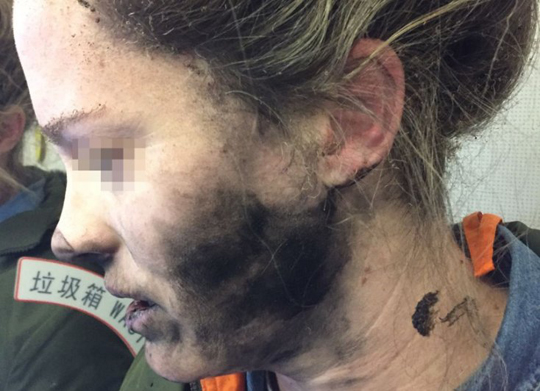Mar 15: The Australian Transport Safety Bureau (ATSB) has issued a passenger warning after a woman's headphones caught fire during a recent flight from Beijing to Melbourne. The airline passenger suffered burns to her face and hands after her battery-powered headphones exploded while she was sleeping during the long-haul flight.

The woman, who was not identified, said she was listening to music when she dozed off and was awoken by the sound of a loud explosion about two hours into the flight.
"As I went to turn around I felt burning on my face," she said, the ATSB reported. "I just grabbed my face which caused the headphones to go around my neck. I continued to feel burning so I grabbed them off and threw them on the floor. They were sparking and had small amounts of fire.
"As I went to stamp my foot on them the flight attendants were already there with a bucket of water to pour on them. They put them into the bucket at the rear of the plane."
Officials identified the lithium-ion battery in the device as the likely cause of the fire, but did not identify the device's brand. The battery and cover had both melted and stuck to the floor of the plane, authorities said.
During the rest of the flight, passengers were forced to endure the smell of burned plastic, burnt electronics and burnt hair in the cabin, the ATSB reported.
"People were coughing and choking the entire way home," the woman said.
The ATSB warning cautioned travellers about the dangers of using battery-powered devices on board and asked passengers with battery-operated devices to stow them properly and keep spares in their carry-on, not checked baggage.
"As the range of products using batteries grows, the potential for in-flight issues increases," the ATSB said. A spokesman for the ATSB declined to specify the brand and model of the headphones or batteries involved in the incident, The Sydney Morning Herald reports.
"The ATSB has assessed that it is the batteries, as the power source, that caught on fire and are therefore the issue," the spokesman said. "All batteries contain stored energy and are therefore potentially risky."
The incident comes after Samsung recalled millions of Galaxy Note 7 phones last year following multiple incidents of the device's batteries exploding or catching fire. The Federal Aviation Administration soon banned the smartphones from being brought onto aeroplanes in October.
Samsung was forced to eventually discontinue the line and recently concluded that the fires were caused by two battery flaws rather than the devices themselves.
Over the past few years, there have also been numerous incidents involving battery-operated devices catching fire or exploding on planes.
In June last year, a passenger's phone got stuck in the reclining mechanism of his seat during a Qantas flight from Los Angeles to New York. While searching for the device, the seat was accidentally moved crushing the device. It soon began hissing and emitting smoke before catching fire.
In August, passengers were forced to disembark from a plane in Sydney after smoke was seen coming from a traveller's hand luggage in the overhead locker. It was later discovered that lithium batteries had ignited.





Comments
Add new comment